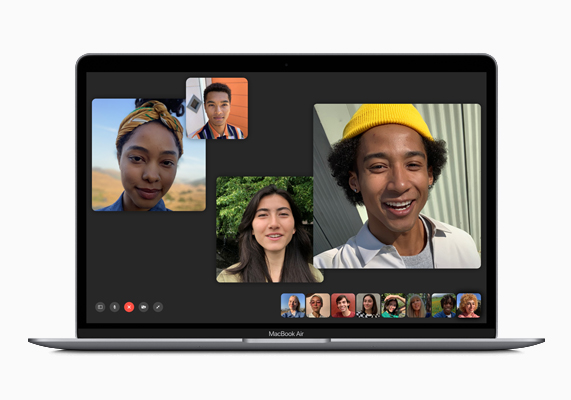Go To School Mac OS
Go To School Mac OS
Adding startup programs in Mac OS X is pretty easy and straightforward. To start off, click on the Apple icon appearing on the top-right corner and then select the option “ System Preferences.”. Once the System Preferences window has been opened, find and double-click on the option “ Users and Groups.”. Go to the Mac toolbar, then find and open “Disk Utilities.” In Disk Utilities, go to the virtual disk image, and then click on the “erase” button and make sure the format selected is.

Tools for Teaching
Learn how to keep track of curriculum, share files with the entire class and individual students, and more.
See Tools for TeachingEnrollment and Management
Learn how to deploy and manage iOS devices and Macs, enable teachers in their classrooms, and more.
See Enrollment and ManagementTeach and learn from any distance

Find resources to help schools, teachers, and parents create engaging learning experiences at home.
Education Deployment Guide
Learn how to prepare your environment, set up and deploy Apple devices, and enable teachers in their classrooms.
View the steps of deploymentApple School Manager User Guide
Go To School Mac Os 11
Learn how to deploy devices all from one place, and everything you need to know about Apple School Manager.
See the Apple School Manager user guideLearn how to use your Managed Apple ID
Find out which services are available with your Managed Apple ID, how to create or reset your password, and steps to sign in.
About Managed Apple IDs for educationApple Teacher at your school
Learn about Apple Teacher — a free professional learning program designed to help educators feel more confident using Apple products in the classroom.
Bring Apple Teacher to your schoolGet education support
Apple Support Community
Go To School Mac Os Catalina
Have a question? Our Apple Support Community can help you find answers.
To get the latest features and maintain the security, stability, compatibility, and performance of your Mac, it's important to keep your software up to date. Apple recommends that you always use the latest macOS that is compatible with your Mac.
Go To School Mac Os X
Learn how to upgrade to macOS Big Sur, the latest version of macOS.
Check compatibility
If a macOS installer can't be used on your Mac, the installer will let you know. For example, it might say that it's too old to be opened on this version of macOS, or that your Mac doesn't have enough free storage space for the installation.
To confirm compatibility before downloading, check the minimum requirements for macOS Catalina, Mojave, High Sierra, Sierra, El Capitan, or Yosemite. You can also find compatibility information on the product-ID page for MacBook Pro, MacBook Air, MacBook, iMac, Mac mini, or Mac Pro.
Make a backup
Before installing, it’s a good idea to back up your Mac. Time Machine makes it simple, and other backup methods are also available. Learn how to back up your Mac.
Download macOS
It takes time to download and install macOS, so make sure that you're plugged into AC power and have a reliable internet connection.
Go To School Mac Os Download
Safari uses these links to find the old installers in the App Store. After downloading from the App Store, the installer opens automatically.
- macOS Catalina 10.15 can upgrade Mojave, High Sierra, Sierra, El Capitan, Yosemite, Mavericks
- macOS Mojave 10.14 can upgrade High Sierra, Sierra, El Capitan, Yosemite, Mavericks, Mountain Lion
- macOS High Sierra 10.13 can upgrade Sierra, El Capitan, Yosemite, Mavericks, Mountain Lion
Safari downloads the following older installers as a disk image named InstallOS.dmg or InstallMacOSX.dmg. Open the disk image, then open the .pkg installer inside the disk image. It installs an app named Install [Version Name]. Open that app from your Applications folder to begin installing the operating system.
- macOS Sierra 10.12 can upgrade El Capitan, Yosemite, Mavericks, Mountain Lion, or Lion
- OS X El Capitan 10.11 can upgrade Yosemite, Mavericks, Mountain Lion, Lion, or Snow Leopard
- OS X Yosemite 10.10can upgrade Mavericks, Mountain Lion, Lion, or Snow Leopard
Install macOS
Follow the onscreen instructions in the installer. It might be easiest to begin installation in the evening so that it can complete overnight, if needed.
If the installer asks for permission to install a helper tool, enter the administrator name and password that you use to log in to your Mac, then click Add Helper.
Please allow installation to complete without putting your Mac to sleep or closing its lid. Your Mac might restart, show a progress bar, or show a blank screen several times as it installs macOS and related firmware updates.
Learn more
You might also be able to use macOS Recovery to reinstall the macOS you're using now, upgrade to the latest compatible macOS, or install the macOS that came with your Mac.
Go To School Mac OS
